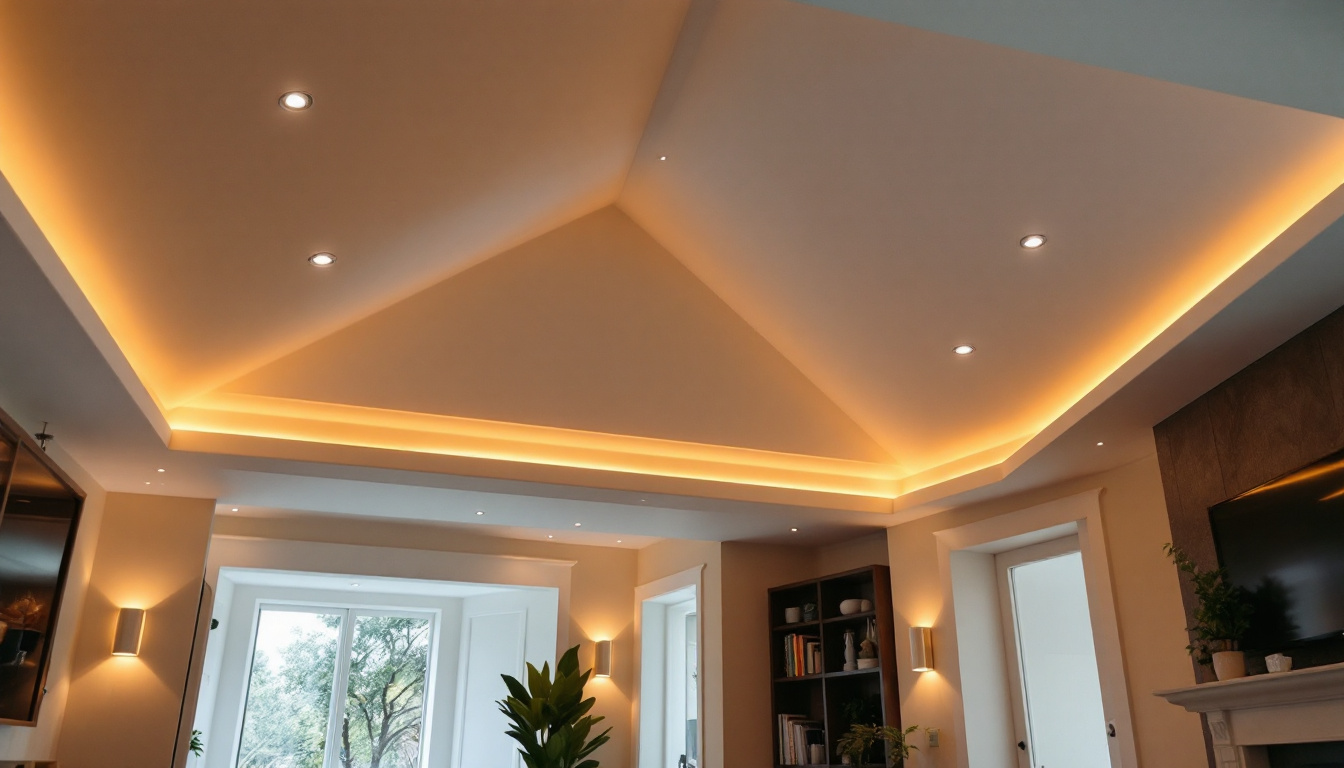

In the world of lighting, the base of a light bulb is as crucial as the bulb itself. The base determines how the bulb connects to a fixture, affecting not only functionality but also compatibility with existing systems. For lighting contractors, understanding the standard light bulb bases can lead to enhanced service offerings and improved customer satisfaction.
Standard light bulb bases come in various types, each designed for specific applications. The most common bases include the Edison screw (E26, E27), bayonet (B22), and bi-pin (GU10, G4). Familiarity with these bases allows contractors to recommend the right products for their clients’ needs, ensuring seamless installations and replacements. Additionally, knowing the nuances of each base type can help contractors educate their clients about energy efficiency and the benefits of upgrading to LED options, which often come with different base configurations.
Standardization in light bulb bases simplifies the selection process for both contractors and consumers. When a specific base type becomes widely accepted, it creates a consistent framework that manufacturers can follow. This consistency not only reduces confusion but also enhances the interchangeability of bulbs across different brands and fixtures.
For lighting contractors, this means less time spent troubleshooting compatibility issues and more time focusing on project execution. Additionally, standardization can lead to cost savings, as contractors can stock a limited range of bulbs that serve multiple applications, streamlining inventory management. Furthermore, as the industry evolves with the introduction of smart lighting solutions, understanding base compatibility will be essential for contractors to offer modern, tech-savvy options that meet the growing demand for energy-efficient and controllable lighting systems. This knowledge not only positions contractors as experts in their field but also builds trust with clients who seek reliable advice on the latest advancements in lighting technology.
Each type of light bulb base has its unique characteristics and applications. Understanding these differences is essential for lighting contractors to provide informed recommendations to clients.
The Edison screw base is the most prevalent type of light bulb base, especially in residential applications. The E26 (North America) and E27 (Europe) are the most common variants. These bases are characterized by their threaded design, allowing for easy installation and removal.
Contractors often prefer Edison screw bases due to their widespread availability and compatibility with a variety of fixtures. This versatility means that contractors can easily find replacement bulbs, reducing the time spent on sourcing products for clients.
Moreover, the Edison screw base supports a range of bulb types, from incandescent to CFL and LED, making it a go-to choice for energy-efficient upgrades. As the demand for smart lighting solutions grows, many smart bulbs are now designed with Edison bases, allowing for seamless integration into existing fixtures. This adaptability not only enhances the functionality of lighting systems but also offers homeowners the chance to modernize their spaces without extensive renovations.
Bayonet bases, such as the B22, are commonly used in certain regions, particularly in the UK and Australia. These bases feature a push-and-twist mechanism, which can be advantageous in situations where vibration might loosen a threaded bulb. However, they are less common in North America, which can pose challenges for contractors working in diverse markets.
Understanding the nuances of bayonet bases allows contractors to cater to specific client needs, especially in regions where these bases are prevalent. Offering expertise in this area can differentiate a contractor from competitors who may not be as well-versed in international standards.
Additionally, bayonet bases are often favored in commercial settings where durability is paramount. The secure fit provided by the push-and-twist design minimizes the risk of bulbs falling out, which is particularly important in high-traffic areas. Contractors can leverage this knowledge to recommend bayonet-based fixtures for clients seeking robust lighting solutions that withstand the rigors of daily use.
Bi-pin bases, including GU10 and G4, are typically found in halogen and LED lighting applications. These bases feature two pins that fit into corresponding sockets, providing a secure connection. GU10 bases are often used in track lighting and recessed fixtures, while G4 bases are common in decorative lighting.
For contractors, bi-pin bases present opportunities for specialized installations. Understanding the specific requirements of these bases allows contractors to recommend the best lighting solutions for various settings, enhancing their service offerings.
Furthermore, bi-pin bases are increasingly popular in energy-efficient lighting designs. With the rise of LED technology, many bi-pin bulbs now offer significant energy savings compared to traditional halogen options. This shift not only helps clients reduce their energy bills but also aligns with sustainability goals. Contractors who stay informed about the latest advancements in bi-pin lighting can provide valuable insights to clients looking to make eco-friendly choices without compromising on style or functionality.
For lighting contractors, a deep understanding of light bulb bases translates into tangible business benefits. From improving customer satisfaction to increasing operational efficiency, the advantages are significant.
Knowledge of light bulb bases enables contractors to provide superior customer service. When clients have questions about compatibility or replacement options, contractors who can confidently address these inquiries build trust and credibility. This expertise can lead to repeat business and referrals, which are vital for sustaining a successful contracting business.
Moreover, being able to recommend the right base type for specific applications can help clients make informed decisions. This not only improves the overall customer experience but also positions the contractor as a trusted advisor in the lighting industry. For instance, when a homeowner is unsure about the best bulb for their vintage chandelier, a knowledgeable contractor can suggest the ideal base type that complements both the aesthetic and functional needs of the fixture. This level of personalized service can set a contractor apart in a crowded marketplace.
Understanding standard light bulb bases allows contractors to streamline their operations. By stocking a limited range of commonly used bases, contractors can reduce inventory costs and simplify their supply chain. This efficiency can lead to quicker project turnaround times, which is a significant advantage in a competitive market.
Additionally, when contractors are familiar with the bases used in various fixtures, they can quickly identify the right products during installations or repairs. This reduces downtime and enhances overall productivity, allowing contractors to take on more projects simultaneously. Furthermore, having a well-organized inventory system that categorizes bulbs by base type can simplify the ordering process and minimize errors, ensuring that the right products are always on hand when needed. This proactive approach not only saves time but also enhances the contractor’s reputation for reliability.
By mastering the intricacies of light bulb bases, contractors can identify opportunities for upselling and cross-selling. For instance, when a client requires a bulb replacement, the contractor can suggest energy-efficient options or advanced lighting technologies that fit the same base type. This not only enhances the value provided to the client but also increases profit margins for the contractor.
Furthermore, understanding the differences between bases allows contractors to offer tailored solutions that meet specific client needs, leading to higher customer satisfaction and loyalty. Satisfied clients are more likely to return for future projects and recommend the contractor to others, creating a cycle of growth and profitability. Additionally, as energy-efficient lighting continues to gain popularity, contractors who are well-versed in the latest technologies can position themselves as leaders in sustainability, appealing to environmentally conscious consumers. This not only boosts profitability but also aligns the contractor with broader industry trends, enhancing their marketability in an evolving landscape.
The lighting industry is continually evolving, with new technologies and standards emerging regularly. For lighting contractors, staying informed about these changes is essential for maintaining a competitive edge.
As LED technology becomes more prevalent, understanding how these bulbs interact with standard bases is crucial. Many LED bulbs are designed to fit traditional bases, but the performance and compatibility can vary significantly. Contractors who are knowledgeable about these differences can guide clients toward the best options, ensuring optimal performance and energy efficiency.
Additionally, as smart lighting solutions gain traction, understanding the integration of smart bulbs with standard bases will be increasingly important. Contractors who can navigate these advancements will be better positioned to meet the needs of tech-savvy clients looking for innovative lighting solutions.
To stay ahead in the industry, lighting contractors should seek out education and training opportunities focused on light bulb bases and emerging technologies. Workshops, webinars, and industry conferences can provide valuable insights into the latest trends and best practices.
By investing in ongoing education, contractors can enhance their expertise and offer clients the most current solutions. This commitment to professional development not only benefits the contractor but also elevates the overall quality of service provided to clients.
Understanding the standard light bulb base is essential for lighting contractors looking to enhance their service offerings and improve operational efficiency. By familiarizing themselves with various base types, contractors can provide informed recommendations, streamline their operations, and increase profit margins.
As the lighting industry continues to evolve, staying updated with trends and technologies will be critical. By embracing education and adapting to changes, lighting contractors can position themselves as leaders in the field, ensuring long-term success and growth.
Ready to elevate your lighting game and pass on the savings to your clients? Look no further than LumenWholesale for all your lighting needs. Our extensive selection of spec-grade lighting products is designed to meet the highest industry standards, ensuring you deliver reliable and high-performance lighting solutions for every project. Say goodbye to inflated markups and hello to unbeatable wholesale prices, with the added convenience of free shipping on bulk orders. Don’t compromise on quality or value—choose LumenWholesale for the perfect blend of affordability and excellence. Explore our products now and secure Wholesale Lighting at the Best Value.

Discover how recessed can lights can transform vaulted ceilings and boost your lighting business.

Discover the transformative role of wholesale lighting suppliers in shaping the future of lighting design and installation.

Discover the essential insights into ballast lights with our comprehensive guide, addressing the most common questions lighting contractors have.

Discover the essential insights lighting contractors need about motion sensor lights.
Get notified when NEW deals are released.
Optimize your budget with wholesale discounts.
Only top-quality, specification-grade lighting products.
No additional costs at checkout - what you see is what you pay.
We understand the unique needs of contractors.